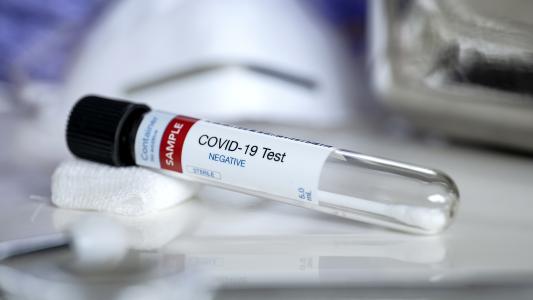A newly published study suggests that we may not need as many ventilators for COVID-19 patients as previously expected.
The reasoning? Many patients who fit the current criteria for invasive ventilation might actually have a better shot of beating COVID-19 without it.
Using Ventilators for COVID-19 Patients
If a person with a respiratory illness is no longer able to breathe on their own, a ventilator can pump air directly into their lungs through a tube inserted down their throats.
But this tube can give viruses a way into the lungs, and if the incoming air pressure is too high, it can damage the organs, making ventilator use risky.
While ventilators are risky in general, COVID-19 patients seem to respond particularly poorly to the devices.
For some people with severe cases of the coronavirus, it’s a risk absolutely worth taking.
However, according to the new study published in the American Journal of Tropical Medicine and Hygiene, healthcare workers may be overusing ventilators for COVID-19 patients.
At the core of the issue is the use of low blood oxygen levels (hypoxemia) as a criteria for mechanical ventilation.
A normal blood oxygen level is between 95% and 100%. If a patient hits 93%, standard practice is to treat them with a noninvasive device, such as a continuous positive airway pressure (CPAP) machine or bilevel positive airway pressure (BiPAP) machine.
Both of those devices deliver oxygen via a mask, but if they can’t raise a patient’s blood oxygen level, the next step, by the book, is to sedate the patient and place them on a mechanical ventilator.
Keeping Coronavirus Patients Alive
By the time a typical patient with pneumonia or sepsis reaches the point that they need a ventilator, they’re gasping for air.
But doctors have reported far different observations with coronavirus patients — some are still able to speak in full sentences and show little to no signs of respiratory distress, even as their blood oxygen levels drop below 80% and doctors set out to intubate them.
According to the authors of the new study, this suggests that healthcare workers shouldn’t use blood oxygen levels as the sole determining factor for using ventilators for COVID-19, instead focusing more on the patient’s respiratory distress or fatigue levels.
One immediately obvious benefit of this is that there should be more ventilators for COVID-19 patients to go around, meaning fears of future shortages might never come to fruition.
But there’s also a secondary potential benefit: we might see an improvement in coronavirus mortality.
Rethinking Ventilator Usage
While ventilators are risky in general, COVID-19 patients seem to respond particularly poorly to the devices.
A recent study in JAMA of more than 2,600 COVID-19 patients in New York found that 88% of those placed on ventilators died — far higher than the average of 40% to 50% for other respiratory illnesses.
Ventilators should be the last step along a progression of oxygen treatments.
That apparently poor track record could be explained by the fact that only the very sickest people are placed on ventilators in the first place, or it could be that ventilators are ineffective or counterproductive for many patients.
While the team behind that study conceded that it’s impossible to know whether those patients might have lived had they not been placed on ventilators, the recent findings have healthcare workers at the highest level rethinking the machines’ role in fighting the COVID-19 pandemic.
On April 21, the National Institute of Health (NIH) released guidelines for treating COVID-19 patients, and it recommends that medical staff approach ventilators as the last step along a progression of oxygen treatments.
First, they should deliver oxygen via a high-flow nasal cannula. If that doesn’t help, the NIH recommends trying a positive-pressure device, and only turning to a ventilator for COVID-19 patients as a last resort.






